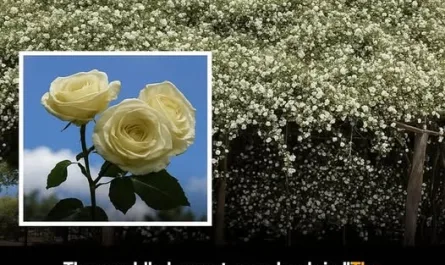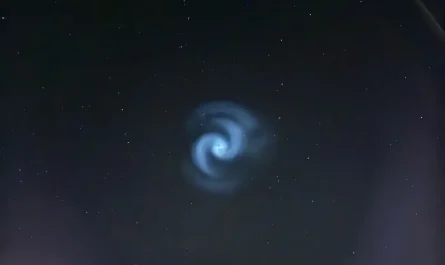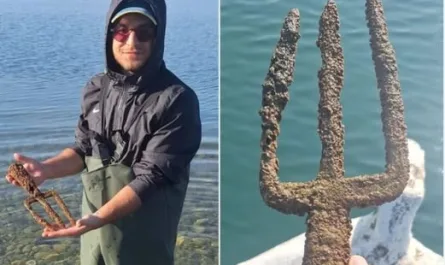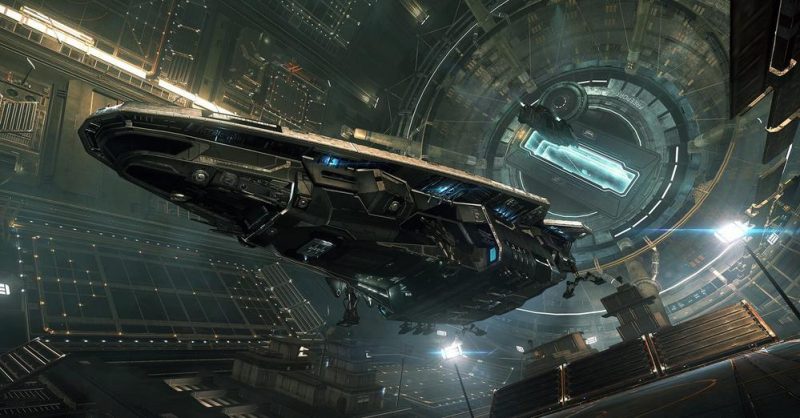In the stark, frozen expanse of the Canadian Arctic, a photograph taken in 1921 captures a quiet, powerful moment between a father and son. The image features Inuit hunter Allakairallak and his young son Phillipoosie, standing together against the snow-covered landscape. At first glance, it is a simple family portrait. But beneath the surface lies a layered and profound narrative — one of cultural heritage, survival, identity, and the subtle yet powerful forces of change.
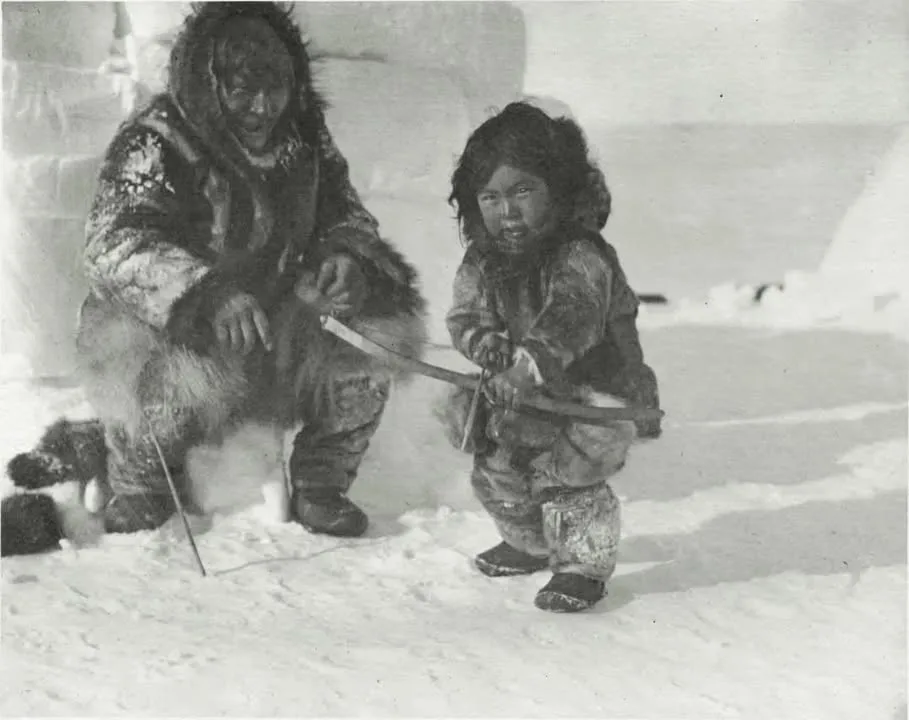
A Glimpse into Traditional Inuit Life
The photograph was taken during the Fifth Thule Expedition (1921–1924), an ambitious anthropological journey led by the Greenlandic-Danish explorer Knud Rasmussen. His mission was to document the life, migration, and oral traditions of the Inuit peoples across the Arctic. What emerged from that journey was not only a vast ethnographic record but also a series of deeply human portraits — including this unforgettable image of Allakairallak and Phillipoosie.
The two are dressed in traditional Inuit winter clothing: fur parkas, boots, and mittens, all meticulously hand-sewn from animal skins — likely caribou, seal, or polar bear. These garments were not merely practical; they represented the accumulated knowledge of countless generations, honed by necessity and observation of nature. Every stitch, every cut of hide, reflected adaptation to one of the harshest environments on Earth.
Such attire wasn’t just about warmth — it was about identity. In the Arctic, where temperatures can plummet below -40°C, survival itself is a cultural act. The clothing bore marks of regional style, family skill, and spiritual symbolism. Wearing it was an expression of belonging — to the land, to a way of life, and to a community with deep-rooted traditions.
The Bond Between Generations
Beyond the clothing and setting, the photograph resonates with something more intimate: the bond between father and son. In Inuit society, this relationship was central to cultural continuity. Fathers were not only providers but teachers — guiding their children through the vast, unpredictable landscape of ice and snow.
Young boys like Phillipoosie would learn early how to hunt seal and caribou, build snow shelters, read weather patterns, and navigate ice floes. These were not merely skills, but acts of intergenerational inheritance. They ensured that cultural knowledge — oral, spiritual, and practical — was passed down through experience.
In the photograph, one sees a moment of stillness, but also of movement — a child at the beginning of a path already walked by his ancestors, a father guiding with quiet strength. It is a portrait of continuity, even amidst the starkness of the Arctic cold.
Standing at the Threshold of Change
Yet the moment frozen in that image is bittersweet. By 1921, the traditional rhythms of Inuit life were already being disrupted. Contact with colonial authorities, the influence of Christian missionaries, and the introduction of Western goods and ideas were reshaping Inuit communities from within.
New trade routes brought unfamiliar materials, tools, and diseases. Government policies began to interfere with Indigenous land use and self-governance. Missionaries often sought to replace Indigenous spirituality and customs with European religious values. Children like Phillipoosie would soon be the targets of residential school systems designed to sever cultural ties.
This photograph, then, captures a liminal moment — a time on the edge. Allakairallak and Phillipoosie are rooted in tradition, yet standing before a world undergoing transformation. Their expressions are calm, but the undertone is one of quiet resistance: to preserve identity, connection, and belonging in a world that may no longer understand the depth of what is being lost.
A Lasting Legacy
Today, the image of Allakairallak and his son endures not just as a document of the past, but as a symbol of cultural strength. It is used in exhibitions, educational resources, and historical retrospectives — not to sentimentalize, but to honor. It reminds us of the deep bonds that shape identity, of the knowledge embedded in traditional lifeways, and of the resilience of Indigenous peoples in the face of imposed change.
In an age where so many cultures face the threat of erasure or assimilation, this photograph is more than archival. It is a witness — to a love between father and son, to a legacy passed through frozen hands and warm hearts, and to the enduring spirit of a people who have lived in harmony with one of the Earth’s harshest yet most beautiful landscapes.
Final Thoughts
As we reflect on this photograph today, let us not only admire its aesthetic power or historical value. Let us listen to what it whispers — about tradition, about transition, and about the timeless human story of teaching, learning, and belonging.
In the snowy silence of 1921, Allakairallak and Phillipoosie stood side by side. Nearly a century later, they still stand — in memory, in history, and in the hearts of those who carry their legacy forward.
